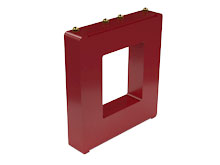Current Transformers
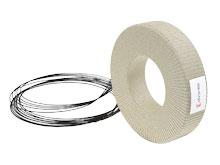
BCT
- for oil immersion
- rated 0.72kV/10kV BIL
- cotton taped
- for installation over insulated cable or bushing
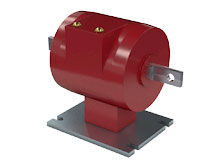
PCTP
- for indoor service
- up to 28kV/170kV BIL
- shielded and unshielded options
- silver plated copper primary
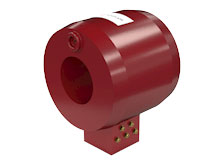
PCW
- for indoor service
- up to 28kV/150kV BIL
- shielded and unshielded options
- 3.25” to 6.50” window diameter
- for installation over insulated cable or bushing
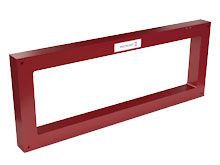
PCZR
- for indoor service
- rated 0.72kV/10kV BIL
- epoxy encapsulated
- ground leakage and ground fault applications
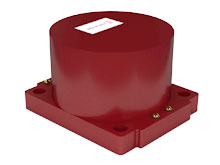
PICA
- for indoor service
- rated 0.72kV/10kV BIL
- up to 15 amp primary/secondary current
- for step-up or step-down applications
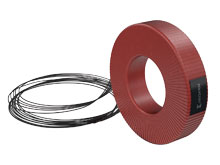
PICVD
- for indoor service
- rated 0.72kV/10kV BIL
- insulating varnish coating
- for installation over insulated cable or bushing
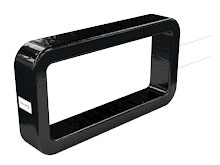
PICVZ
- for indoor service
- rated 0.72kV/10kV BIL
- insulating varnish coating
- ground leakage and ground fault applications
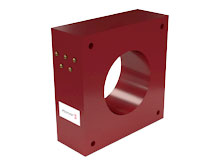
PICW
- for indoor service or oil immersion
- rated 0.72kV/10kV BIL
- square or octagonal body styles
- 3.25” to 36.00” window diameter
What are Current Transformers?
In the field, getting a direct measurement of high currents at high voltages present in power systems can be difficult. Current Transformers, a type of instrument transformer, provide a safe way to monitor and measure primary current by producing an alternate, proportional current in its secondary winding. The CTs main function is to transform a large current value into a smaller current value for accurate measurement and protection purposes.
CTs are used for a wide range of indoor and outdoor applications including switchgears, generators, medium to high voltage circuit breakers, and differential and over current protection of power and distribution transformers.
Types of Current Transformers
CTs are manufactured in various sizes, shapes, and ratings for a broad range of applications. For low and medium voltage applications, there are three main classifications based on construction; window, bar, and wound. All three can either be single-ratio or multi-ratio type.
- Window-type Current Transformer (Toroidal CT or Ring CT)
- Bar-type Current Transformer
- Wound Current Transformer
Window-type CTs do not contain a primary winding, instead, the primary conductor is a cable, or a busbar threaded through the window in the center of the toroidal transformer. A few examples are, Bushing Current Transformers (BCTs), Zero Sequence, and Current Sensor.
Bar-type CTs are cast with a busbar as a single turn primary winding. The secondary winding is fully insulated from the primary that is at CT rated voltage.
Wound CTs have multiple primary turns to increase the CTs accuracy at certain primary currents. The primary windings are insulated from the secondary winding.
Polycast designs and manufactures a wide range of low and medium voltage current transformers. Our CTs are cast in epoxy resin or finished with cotton or fibreglass tape for metering, relaying, and combination applications. All Polycast CTs are individually designed, manufactured, and tested to meet and exceed North American and International standards including CSA, IEC, and IEEE.
Operating temperatures for indoor bis-A epoxy current transformers are between -25°C to +95°C. Outdoor cycloaliphatic epoxy current transformers can withstand temperatures from -50°C to +95°C and are recommended for applications where UV, pollution, or condensation are considered factors. Our materials are UL 94 V0 certified.
The current transformers listed on our website are standard products. Please contact our Engineering team if you would like a CT designed to different specifications, ratings, or require a custom-built product for a unique application. To assist with this process, check out our Design Your Own page, to list your specifications with the help of a visual 3D model or use our product line templates.
What are Metering & Relaying Current Transformers?
Depending on the application, a manufacturer may specify the use of a Metering CT (Measuring CT), Relaying CT (Protection CT), or a combination of both.
Metering CTs are used to precisely measure current flowing through primary conductors. A “Revenue Grade” Metering CT is an extremely accurate CT used by utility companies to monitor the current and power usage for billing purposes. They must often be Industry Canada Approved before installation.
Relaying CTs (Protection CTs), are installed within a power system to protect against over current or fault events. They are used with other protection equipment such as relays.
What is a Bushing Current Transformer (BCT)?
A BCT slips around a bushing of a high-voltage transformer or circuit breaker. For oil application, the BCT is finished with cotton tape or paper insulation and for dry applications, it is finished with varnish tape or fiberglass insulation.What is a Multi-Core Current Transformer?
Within one body, this type of CT has 2 or more sets of independent cores with secondary windings.
Are Current Transformers and Potential (Voltage) transformers the same?
No, they are both instrument transformers, but they have different construction, applications, and functions. One of the major differences between them is that CTs step-down high current value into a low value, whereas a potential transformer (PT) or voltage transformer (VT), step-down high voltage values into low voltages.
A CT generally possesses one or very few primary turns. The primary side winding could simply be a conductor in an empty CT window while the secondary winding often has many turns around the core. In contrast, a PT has a higher number of turns on a primary side and smaller number of turns on the secondary side.
Polycast: Your Trusted Current Transformer Manufacturer
Polycast is a leading manufacturer of current transformers (CTs), specializing in the design and production of high-quality instrument transformers for a wide range of applications. With expertise in both low and medium voltage CTs, we provide safe and accurate solutions for monitoring and measuring primary currents in power systems.

